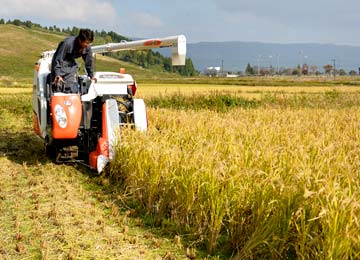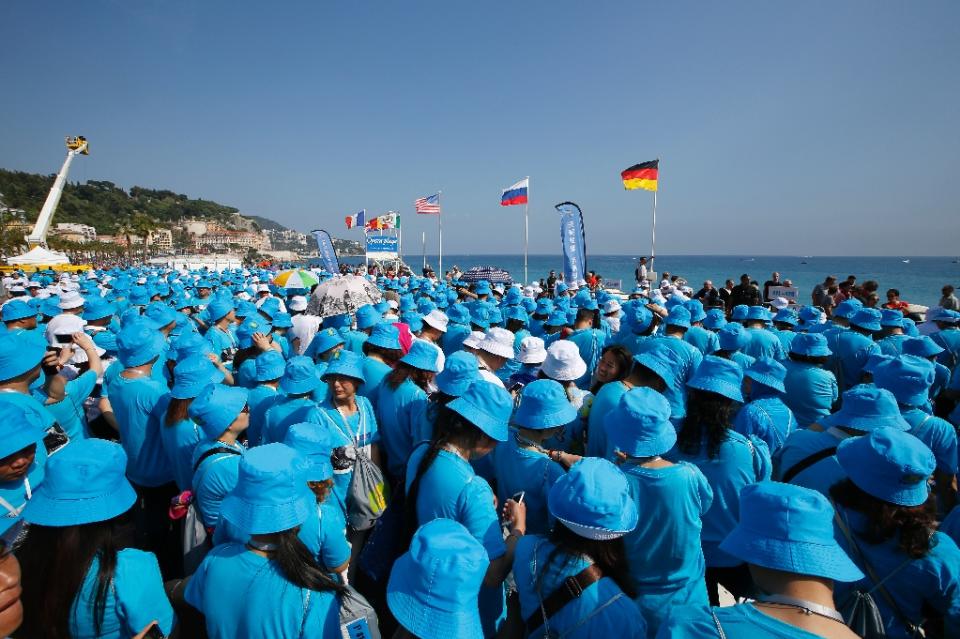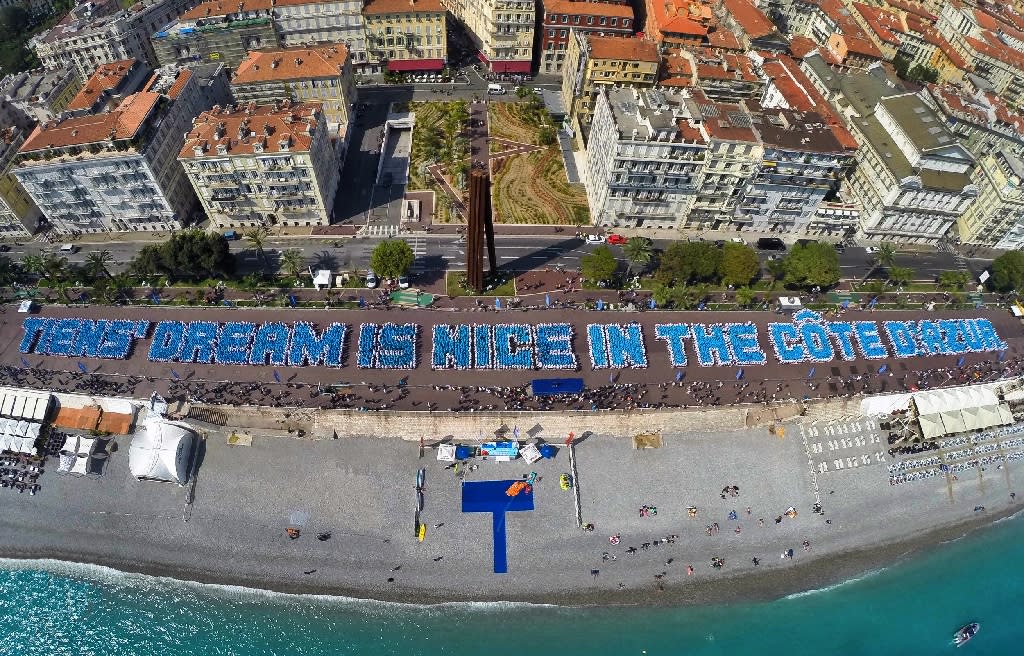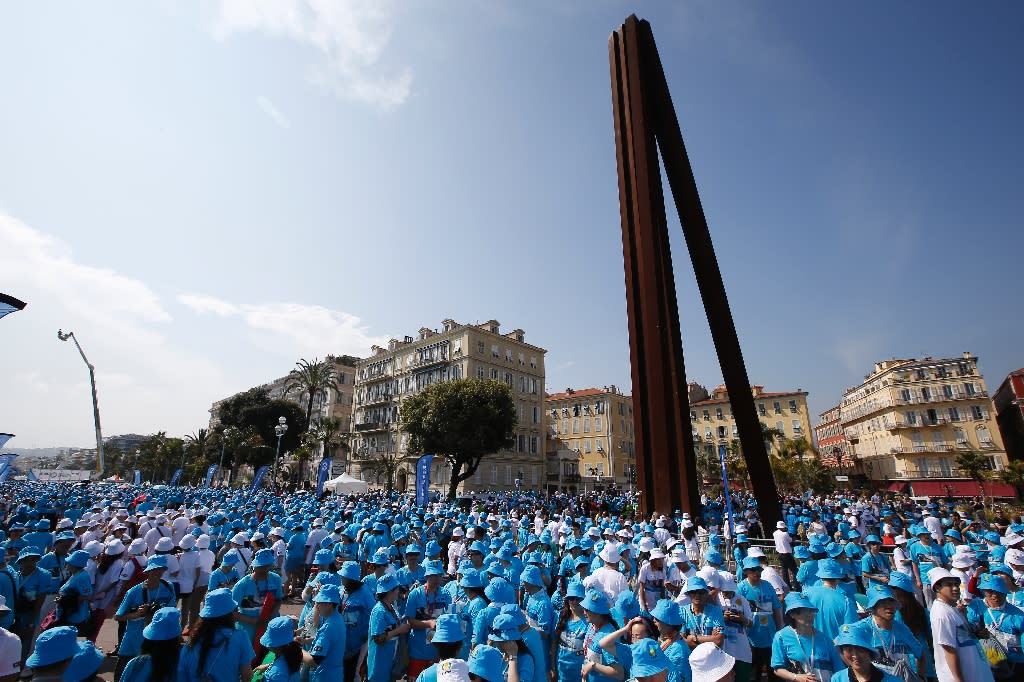This is what really happened in China:
The Little Village That Could: Shenzhen Reinvents Itself, Set to Surpass H.K.
The Little Village That Could: Shenzhen Reinvents Itself, Set to Surpass H.K.
May 11, 2015
People dance at night in Deng Xiaoping Portrait Square in the Luohu district of Shenzhen, China. Photographer: Brent Lewin/Bloomberg
Whatever happened to Shenzhen?
Remember the place that spawned China’s meteoric rise in manufacturing? The little fishing village opposite Hong Kong on the Pearl River delta that became a sprawl of factories and pollution and 10 million migrants from all over the nation.
A general view of Shenzhen in 1985 in Shenzhen, Guangdong province of China. Source: ChinaFotoPress via Getty Images
Well, the city has reinvented itself once more with an economy set to overtake Hong Kong this year.
The sheds full of workers banging out the world’s toys and clothes are mostly gone. The board-stuffing electronics lines filled with migrant workers are headed the same way. In their place are bankers, tech entrepreneurs, researchers and hipsters.
Shenzhen reported a 7.8 percent rise in gross domestic product in the first quarter, topping the biggest Chinese cities. Gone is the model of cheap labor and foreign investment pioneered by Deng Xiaoping, it’s now driven by a force current Premier Li Keqiang wants replicated across China: innovation.
“It’s a true paradise if you want to create your own business,” said James Wang, a 39-year-old Internet entrepreneur based in Kexing Science Park, where the canteen can serve 12,000 diners. “Shenzhen is no longer a fishing village or a sweatshop. There are thousands of firms like mine in this park.”
Deng made Shenzhen a test ground for a market-based economy in 1980, and it succeeded beyond all expectations. In the Nanshan district, the technology heartland of the city, the per-capita GDP last year
, higher than Japan, Germany and Hong Kong. The city is home to many of China’s most successful companies, including telecom giant Huawei Technologies Co., web portal Tencent Holdings Ltd. and Ping An Insurance (Group) Co.
‘New Hope’
“In China, while places like the rust-belt in the northeast or the coal-mine area of Shanxi are falling into economic stagnation, Shenzhen is offering new hope,” said Shen Jianguang, chief Asia economist at Mizuho Securities Asia Ltd. in Hong Kong. “Shenzhen’s growth is relying on innovation, technology and the efficient use of capital.”
The switch to innovation and finance helped almost double the size of the city’s economy to 1.6 trillion yuan in the five years to 2014. At that rate it would this year eclipse Hong Kong, whose economy is growing more slowly.
Residential buildings stand at dusk in the Nanshan district of Shenzhen, China. Photographer: Brent Lewin/Bloomberg
Behind that recent growth are companies like SZ DJI Technology Co., maker of the top-selling Phantom drones, and OnePlus, whose smartphones are taking on Samsung Electronics Co. and Apple Inc. under co-founder Carl Pei, who is in his mid 20s.
“You want to do something or get something, you can get it here,” said Hellen Tse, director of venture capitalist Oneworld Investment Co., while sipping tea in her 30th-floor office, surrounded by books and statues of Buddha. Outside her window, construction crews are finishing the 600-meter Ping An Financial Center, one of about a dozen skyscrapers over 200 meters.
Corruption, Pollution
The breakneck speed of Shenzhen’s rise has come with the usual corruption and pollution that permeated China’s boom years. Jiang Zunyu, a former district party chief, is
of taking more than 250 million yuan in bribes in an official probe that caused the country’s first developer bond default by Shenzhen’s Kaisa Group Holdings Ltd.
While the air quality is better than other major Chinese cities, the rivers are still tainted by the city’s industries, despite billions of dollars spent trying to clean up the province’s waterways. Two of the most polluted rivers in Guangdong in the first quarter flowed through Shenzhen, according to the local environmental protection agency.
Labors have a meal at the construction site in 1985 in Shenzhen, Guangdong province of China. Source: ChinaFotoPress via Getty Images
Even so, Shenzhen is doing better than most places in the country, which had the slowest expansion last year since 1990, as the central government grapples to stamp out corruption and inefficiency in dominant state-run companies. Profits at China’s state-owned enterprises fell by 8 percent in the first quarter from the same period a year earlier.
Different Genes
“State companies value seniority and formality, but the Shenzhen gene is different,” said Shorn He, 36, who moved to the city four years ago after working for a decade in a Beijing-based state company. He rented a small factory near the airport to process after-market smart-phone screens. “Shenzhen has everything I need -- the clients, the materials, the trained workers, and the knowledge.”
It’s a combination that made drone-maker DJI the darling of investors. In less than a decade, it has gone from start-up to a valuation estimated in the billions of U.S. dollars.
“It’s the first time for a Chinese company to create a new global market,” said spokesman Michael Perry, from Texas, who estimates the company sells more than half the world’s private drones. When Perry joined a year and a half ago, the company occupied three floors. Now it has 11.
Surging Stocks
Downtown, on a scrolling ticker board in front of the dark-grey Shenzhen Stock Exchange, an abundance of the lucky color red shows China’s equities market is having another bullish day. The bourse’s benchmark index has more than doubled in 12 months.
In the new financial free-trade zone of Qianhai to the west of the city, companies have special dispensation to borrow yuan from Hong Kong at lower rates than mainland banks offer. Each working day, 100 new companies register in the zone, according to
. One was WeBank, China’s first private-funded Internet-based bank, where Premier Li hit the button to make the first loan in January.
Foxconn Robots
For the city’s traditional manufacturers, it’s a question of upgrade or move inland, where land is cheaper. In the suburb of Longhua, the city’s largest employer, Foxconn Technology Group, churns out gadgets for Apple, Microsoft and Sony. Once the sole manufacturing base for iPhones and iPads, its Shenzhen workforce has dropped to 200,000 from 350,000 five years ago, as the company spread assembly to other cities like Zhengzhou and Chengdu.
Many of the positions that remain are higher skilled. Teams develop robots and train employees from other plants to operate them. Factory workers retrain as software engineers or animators.
“Though labor prices are higher, you need to consider that labor quality is also higher,” said spokesman Bruce Liu, sitting under a sun umbrella at one of Foxconn’s campus cafes.
Feng Wanzhi, general manager of poster-maker TCK Printing, has had to relocate her factory further and further out and is now at Buji Lianchuang Science Park, more than 10 subway stops from the new Ping An building. She complains that her margins have been squeezed by competition, falling prices and rising wages.
Perhaps the biggest change is a new sense of belonging. Young women in Mini Coopers zip past families in Audi Quattro SUVs, and property projects like Shuangxi Garden offer luxury condos at 200,000 yuan per square meter ($3,000 per square foot).
Somewhere Else
“Shenzhen has no concept of outsiders because everyone is from somewhere else,” said Song Lifeng, vice president of Shenzhen Yuanhengjia Education Group, which runs private schools and more than a dozen kindergartens in the city.
For the first time, Shenzhen enrolled more primary school children than Beijing in 2014. It has the youngest population of China’s top-tier cities, with an
of 34 last year.
“I remember when there were just fields and mountains,” said Feng Zhifeng, 40, an interior designer and restaurateur who moved to the area in 1995 as a student.
On the seafront at Shekou, where refugees were smuggled to Hong Kong on fishing boats in the 1970s, Feng’s restaurant serves duck with truffles and Australian wines.
One thing that hasn’t changed in Shenzhen is a feeling that this city is special in China. That here, things are done differently.
“The biggest advantage of Shenzhen used to be policies -- you could get things done in Shenzhen that were impossible in other parts of China,” said Ye Qing, chairwoman of the Shenzhen Institute of Building Research Co., which designs eco-friendly buildings. “That advantage has gone completely. The new advantage for Shenzhen is its people, the young and ambitious people who love the city.”











